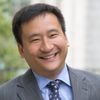Finally, the debate over Asian Americans and affirmative action has taken a turn toward the rational. Race tends to infuriate us, all of us, regardless of our own identities and politics. And admissions to highly-selective institutions of higher education, in an era where all of us are acutely aware of how competitive the global economy has become, riles us up even more. Too often, Asian Americans have been added to the picture to denigrate other people of color, held up with as much favor as envy as “the model minority.” The message is, none too subtly, “they made it, why can’t you?”
Now, the real problem has become clear.
Asian Americans might be against “preferences.” What we should understand, however, is that the vast bulk of such preferences operate to benefit whites over Asian Americans, not African Americans and Hispanics. Whites and Asian Americans are the primary competitors to one another, and within each community, for seats at top-ranked schools. If all the African Americans and Hispanics in the pool vanished — which some seem not to mind; witness the acceptance of the absurdly low enrollment in the University of California professional schools after Proposition 209 passed — white and Asian American kids still would be vying against one another.
It is in that contest that whites have been given an unfair advantage. Properly implemented, efforts to ensure diversity in enrollment would evaluate the persons not included in the program, generally whites and Asian Americans, on an equal basis. The data has always been out there in the open: whites are admitted with, on average, lower test scores. Yet that astonishing fact has simply been ignored or misinterpreted.
Jerry Kang, a vice-chancellor at UCLA in charge of addressing bias and promoting inclusion, wrote an academic article more than a generation ago describing a phenomenon he termed “negative action” toward Asian Americans. In one of the earliest studies to explain the situation, he pointed out that Asian Americans were not only excluded from affirmative action for other minorities but also subjected to worse treatment than the majority. They were being passed over not due to what has been dubbed “reverse” discrimination (to help African Americans and Hispanics) but rather out of regular discrimination (to help whites). That is the old-fashioned type of discrimination, practiced, for example, when Jews were not fully white and faced quotas in college admissions right up to the civil rights movement of the 1960s. The Asian American experience repeats the Jewish example. There is no good basis for saying that whites were discriminated against by Asian Americans historically, such that a remedy is necessary; or that they suffer some disadvantage vis-a-vis Asian Americans today, such that mitigation is needed.
Despite his work, critics, including Asian Americans, persisted in urging Asian Americans toward the impossible position of taking on African Americans and Hispanics. The few statistical studies that have been done bear out Kang’s hypothesis. It is even the case for magnet high schools: in San Francisco, Lowell, both public and prestigious, had a system adopted in settlement of desegregation litigation in which Chinese American students had to do better than white students.
There is no quarrel with the basic analysis that whites have been held to a lower standard than Asian Americans. People simply have not been much exercised about it, or, when Asian Americans complained, they were misdirected to blame African Americans and Hispanics. There are quibbles about the exact mechanism that is used. It may be that “legacy” preferences, for students who are the child or grandchild of an alumnus or donor, are the factor. Ironically, they could be phased out as Asian Americans are poised to have a generation able to check that box.
Eventually the truth prevails. At least two major op-eds have framed the issue accurately. One appeared last year in “Inside Higher Education,” an on-line periodical read by everyone within academe. Today, another has run in the “New York Times."
Both say what Kang and others have noted to no avail: to reiterate, “affirmative action” for whites, not African Americans and Hispanics, is hurting Asian Americans. Perhaps that will change. It likely would lead to what might be untenable, that on some campuses whites come to be outnumbered by Asian Americans. The demographic trend toward majority-minority, some have suggested, is why state subsidies for schools, in the interests of access for all, have become less popular. Most college students in four-year schools are at public ones. But their tuition continues to rise as the tax-payer contribution falls.
There is much more to be said about these subjects and which should be said calmly and reasonably, rather than angrily. Asian Americans could be disaggregated to reveal disparities. Asian Americans usually are measured against an inappropriate baseline of the general population, not those who are qualified, to suggest their overrepresentation. Asian Americans also are grouped with Asian nationals — citizens being categorized with foreigners — artificially increasing their numbers while politically decreasing their support.
People can, and do, disagree in good faith about whether racial diversity is a worthwhile objective and how it ought to be attained. But when we argue, we should do so on the basis of actual facts rather than false stereotypes. Asian Americans are right to be upset. They should know the cause of their concern.
